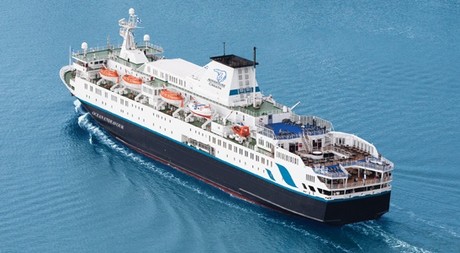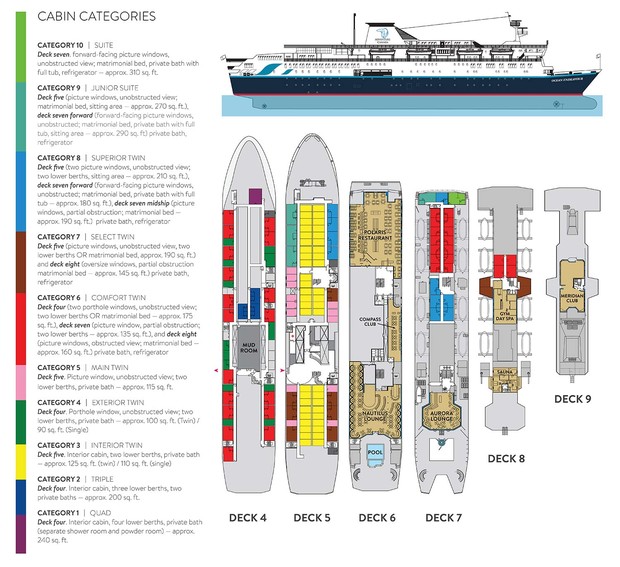Our classic Arctic expedition begins by exploring Greenland's dramatic fjords and dynamic maritime communities. The great ice fjord at Ilulissat, source of the majority of the icebergs in the North Atlantic, is one of many highlights along Greenland's spectacular western coastline.
Across the Davis Strait in Nunavut, the Canadian Arctic experience begins in Qikiqtarjuaq (Broughton Island). Opportunities for polar bear, whales, and muskox abound on Devon Island, while Prince Leopold Island is one of Canadas best birding areas. Abandoned RCMP and HBC posts offer a haunting glimpse into the regions history of exploration and trade.
At Beechey Island, well pay our respects at the graves of three of Sir John Franklin's men. And our departure point, Resolute Bay, memorializes the courage of the Inuit of Canada's Arctic.
This itinerary represents our definitive approach to expedition travel and we will spend our days searching for every exploratory opportunity. In the winding fjords of Greenland, in the multitudinous islands of Nunavut, we will live and breathe the natural history of some of the planets most striking features. We will search for the animal life that ekes out their hardy lives in hostile conditions and find striking beauty in the immense and indomitable north.
Charter flight
It is necessary to join a charter flight to get to and from the start of this cruise. The charter flies from Toronto, and back to Ottawa, and costs $2195 USD.
Explore Niqinganiq in Isabella Bay, an Inuit-organized bowhead whale sanctuary
Voyage along the magnificent fjords of Greenlands coast
Learn first-hand about the history and culture of the Inuit
Search for bears, whales and walrus in their Arctic feeding grounds
Availability is always subject to confirmation. Please check with us before booking flights
There are no future departures for this trip at this stage.
Ocean Endeavour

| Length | 137 m. |
|---|---|
| Max capacity | 198 |
| Built: | 1982 |
| Refurbished | 2010, 2014, 2017 |
Sailing with a maximum of 198-passengers, Ocean Endeavour is the perfect vessel for expedition cruising. Outfitted with twenty Zodiacs, advanced navigation equipment, multiple lounges and a top deck observation room, she is purpose-built for passenger experiences in remote environments. The Ocean Endeavour boasts a 1B ice class, enabling her to freely explore throughout the Arctic summer.Launched in 1982, she has had numerous upgrades, most recently in 2010 and 2014.
At 137 meters (450ft) in length, Ocean Endeavour has plenty of interior and exterior space. Enjoy multiple decks offering comfortable lounge chairs, outdoor dining, a swimming pool, sauna and even a hot tub! The spacious interiors allow for multiple workshops and presentations to occur simultaneously. Community is at the heart of Adventure Canada’s expedition experience. We gather together to learn, enjoy a drink, sing a song or share a yarn – connecting with one and other. The three lounges aboard Ocean Endeavour are fantastic public spaces for seminars, events and dialogue.
The Ocean Endeavour’s private spaces are stylish and comfortable. All cabins have private washroom facilities, a phone for internal calls, radio, TV and air-conditioning. There are a variety of cabin categories available ranging from 9-30 m2 (100-320 sq ft).Ocean Endeavour’s crew is experienced, and friendly. Her shallow draft and maneuverability allow her to access isolated fiords, bays and secluded communities. The stylish vessel is at home among the glorious settings we seek. Enjoy the class and comfort of a boutique hotel, while venturing to some of the world’s last great frontiers aboard the Ocean Endeavour!
Deck plans are for illustrative purposes only – The actual ship and cabin layout may differ.



